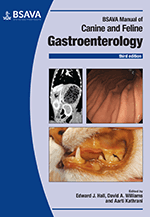
Full text loading...

Laboratory-based faecal examinations, especially microscopy for the identification of intestinal parasites, are important in investigating gastrointestinal disease, whereas macroscopic faecal examination is of limited value. This chapter discusses a variety of tests relating to faecal biomarkers, parasites, enteropathogenic bacteria and viruses.
Faecal examination, Page 1 of 1
< Previous page | Next page > /docserver/preview/fulltext/10.22233/9781910443361-3e/BSAVA_Manual_Gastroenterology_3_9781910443361-3e.2.5-11-1.gif

Full text loading...








